|
ก@ |
 What
different between NFB11 and NFB12 : What
different between NFB11 and NFB12 :
The NFB-11 has quite
high fidelity, its sound signature is absolutely revealing, neutral
and faithful and very detailed. It can show how good or how bad a
recording is. If you are afraid of flaws being revealed in the music
files, other gears like those applying WM8741 will be better. Our
gears that apply WM8741 are designed to sound neutral and revealing
but with a little smoothness .
Like the
FUN and
Sparrow ,
NFB-3/2 ,
NFB-12.
The NFB-11 best match
with the headphone which had neutral or warmer side sound
characteristic .
The NFB-12 is a twin brothers of NFB-11 , for the
sounding design request , we applied the WM8805 as the SPDIF
interface , its sound characteristic is same with the WM8741 which
is detail but smooth, and it can support up to 192KHz input.
The NFB-12 has revealing, neutral
and faithful and very detailed but slight on warm side and a bit
smoothness.
 NFB-11
NFB-11


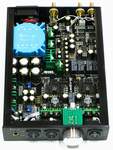
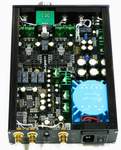
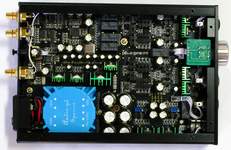
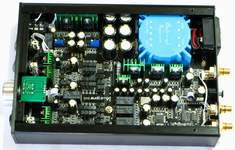 |
ก@ |
|
ก@ |
About ACSS:
ACSS (Audio-gd Current
Signal System) is Audio-gd's system for transmitting audio signals in
the current domain. This concept, first seen in 1966, we have used for
many years, and since 2006, have evolved the technology to include all
audio signals in our systems from the digital source to the power
amplifier. Since 2005, ACSS comp5nts have become Audio-gd's most
popular products, with a great many customers purchasing them in China
and Hong Kong.
About NFB?
NFB means Non-Feedback.
The NFB-11 applies the
newest ESS high-end Sabre32 DA chip ES9018 which can support up to
32Bit/192KHz input (Coaxial input, the optical and USB support up to
96KHz). Similar to other ES9018 designs, Our NFB-11 applies
Non-feedback ACSS output stage. The ES9018 feed to the ACSS output
stage without any OPAs so it can achieve very neutral sound quality.
The ACSS is a non-feedback
technology made with fully discrete amplifiers. Most people know the
global
feedback design can offer better specs in test measurements, and
non-feedback can't do well in test measurements but can offer better
sound for the human's ears. Here is a conflict of the classic circuits.
But the ACSS opens a new field, it can offer a least coloration sound
which is more neutral with very low distortion and high linearity. So
it can retain the dynamics, detail and neutral sound but not sound
bright or harsh.
The output buffers are
Non-feedback. For low impedance, we applied a diamond output stage
which is quite less colored than most conventional circuits.
The DAC is without couple
caps to avoid coloration.
The 24/96 USB interface
outputs a I2S signal to ES9018.
Fully
Discrete ACSS headphone amp.
Click image to enlarge.
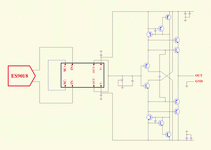
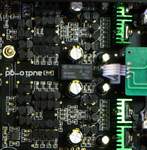
NFB-11 applies the excellent DA chip ES9018 and excellent analog
output stages, but these are not the only keys of the best sound.
The power supply is most important. Even applying the best DA chip
and the best amp, if matched to a normal power supply, the total
sound may still be average or sound musical but can't be neutral and
detailed. That is why it is easy to find hi-end grade gears maybe
without the best chips or amp stages, but with plenteous dedicated
DC supply circuits.
The
NFB-11
uses 6 groups of high-quality PSU
with dedicated DC
supply. Digital and analog voltages each have separately isolated
internal power regulations.
The
analog power supply is more important for sound reproduce, in NFB-11,
the +15V and -15V for the ACSS analog output stages are high speed
Discrete PSU. They can offer pure and quick power supply for driving
the headphone exactly. The high voltage power supply can drive most
headphone from 15 to 600 ohms as well.
Strong power supply.
Click image to enlarge.
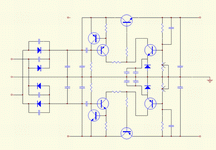

ก@
About volume in ACSS circuits:
For a headphone amp, the
volume control is very important.
NFB-11 use ACSS technology, which is very
different from conventional technology.
In conventional technology the gain is fixed, like 3DB or 6DB.
But in ACSS
technology the gain changes with volume, and when you turn off the
volume, the gain is -80DB or -100DB (in conventional technology it
can't work lower than 0DB).
While you are listening in normal
volume, the gain may be around -50DB, or between -80 to +12DB.
The volume control is also
different from conventional technology. Conventional technology volume
control is placed in the input, and attenuates the signal.
But in ACSS, it is placed at the
ACSS modules output, where the output is the current signal, not the
voltage signal. The volume control is I/V conversion, and the volume
depends on the current (I) conversion to the voltage (V). (Like D/A
chips output I/V conversion)
As you can see, ACSS circuits have no
gain, as it is a completely different circuit.
The sound quality benefits from I/V
conversion volume control. Mark Levinson also knows that current
volume control has great benefits, so in their Top End preamp NO.32
volume control, they use many components to change the signal to
current signal (I), then through the R-2R network to control the
volume, and then change back to voltage signal (V) again. But NFB-11 is simply a more complete work in terms of the current signal,
and technically, it is superior to conventional technology.
Hi-end grade construction:
 The
NFB-11 uses 20W high performance transformers .
More than 10,000uf audio grade NOVER capacitors are used to ensure
ample and
smooth power feed. The NOVER capacitors are specially custom order from
NOVER (U.K.) according to Audio GDกฆs requirement. Total of 6 PSU groups are used
to purify the power supply. To achieve Silent operation, the control
circuit is powered with separate regulator.
The
NFB-11 uses 20W high performance transformers .
More than 10,000uf audio grade NOVER capacitors are used to ensure
ample and
smooth power feed. The NOVER capacitors are specially custom order from
NOVER (U.K.) according to Audio GDกฆs requirement. Total of 6 PSU groups are used
to purify the power supply. To achieve Silent operation, the control
circuit is powered with separate regulator.
 The NFB-11
uses high grade SMD resistors (1 % tolerance).
RCA sockets are custom
ordered and 24k gold-plated. All transistors are exact-matched Toshiba
and Hitachi.
The NFB-11
uses high grade SMD resistors (1 % tolerance).
RCA sockets are custom
ordered and 24k gold-plated. All transistors are exact-matched Toshiba
and Hitachi.
 The NFB-11 applies
the custom order ALPS 27 volume pot for reducing channel imbalance and
improving on sound quality, the quality is higher and much more costly
than the standard ALPS 27 more common in the market.
The NFB-11 applies
the custom order ALPS 27 volume pot for reducing channel imbalance and
improving on sound quality, the quality is higher and much more costly
than the standard ALPS 27 more common in the market.
ALPS 27 volume pot
Vishay
SMD resistors
(1 % tolerance)
Click image to enlarge.
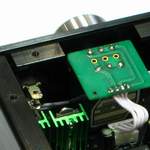

 All-aluminum
chassis can reduce noise pick up
.
All-aluminum
chassis can reduce noise pick up
.
 The
PCB
employs
2MM
double
copper/stringy board, 70uM copper.
The
PCB
employs
2MM
double
copper/stringy board, 70uM copper.
 All
Audio-gd's
workers
are
hi-fi
enthusiasts and skilled electronic
assemblers.
All
Audio-gd's
workers
are
hi-fi
enthusiasts and skilled electronic
assemblers.
 Prior
to
shipment,
our
products
are burned-in for 100 hours, and
undergo at least 10 times a variety of tests to ensure they work
perfectly for the customer.
Prior
to
shipment,
our
products
are burned-in for 100 hours, and
undergo at least 10 times a variety of tests to ensure they work
perfectly for the customer.
The
NFB-11 Functions:
Front
plate:
Output switch: Select output
between headphone, Fixed DAC output and Variable DAC output.
Gain switch: Select
gain between low gain (+0DB) and high gain
(+12DB).
Volume knob: Control
the volume level of the headphone and variable DAC output.
Selector switch: Select
source between USB, coaxial and optical.
Rear:
Power socket: For power input
and power ON/OFF switch.
USB socket: For USB input.
Opt socket: For optical input.
Coax socket: For coaxial input.
DAC out sockets: For dedicated DAC output. (The DAC output level can
be chosen between variable and fixed , see below).
How to set the NFB-11 DAC output
as variable line level only?
The
NFB-11 has one group Line out for dedicated DAC output, in default its
output level can select between variable and fixed. But owners can set
it to output variable line level only (if yours amp or active speakers
without volume control, we advice setting to variable output
only). See the photos, change the jumper to "variable" side for
setting the DAC output to variable only.
Setting the Fixed and variable output The
new functions after setting DAC output
sockets
to variable only



 The NFB-11 include these
accessories: The NFB-11 include these
accessories:
AC power
cord
X1
Optical
cable
X1
USB cable
X1
 Choice of
power cable appropriate for your country: Choice of
power cable appropriate for your country:
When you place the order
for NFB-11, please let us know the type of power cable you require.
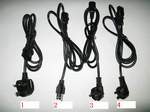
 Pack Weight:
approximately 2 Kg
Pack Weight:
approximately 2 Kg
 Size:
Width
159mm, height 42mm and depth 225mm.(With feet)
Size:
Width
159mm, height 42mm and depth 225mm.(With feet)
 Price: USD275 ( Promo ) (Excluding
shipping charge) Price: USD275 ( Promo ) (Excluding
shipping charge)
 Audio-gd exclusive power cable, XLR cables & Canare
coaxial cableกG Audio-gd exclusive power cable, XLR cables & Canare
coaxial cableกG
Cable links http://www.audio-gd.com/pro/cablesEN.htm
ก@
|
ก@ |

